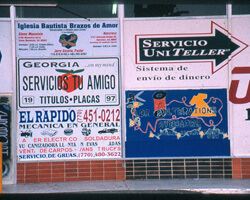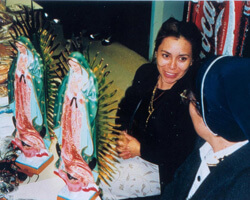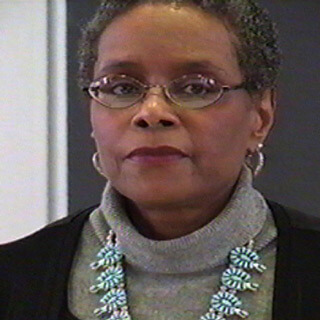Overview
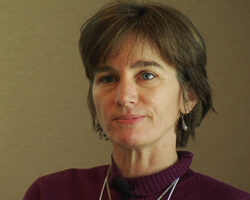 |
Over the past two decades, hundreds of thousands of men and a growing number of women and children from Mexico and other parts of Latin America have migrated to the Atlanta, Georgia metropolitan region to find work in its thriving economy. According to the Census, Atlanta has experienced the most rapid Hispanic growth rate of all major US metro areas during these years. As a new immigrant destination, Atlanta has presented distinct opportunities and constraints to Mexicans and Central Americans seeking to live and work there. Immigrants have been drawn by the huge demand for labor in the construction, landscaping, restaurant, and service industries, and by the availability of cheap housing in form of numerous low-rent apartment buildings.
But they have also faced serious restrictions and discrimination as low-wage immigrant laborers, particularly the large number of undocumented workers. Despite these constraints, Latino immigrants have created cultural spaces for themselves. One of these is a Latino-Catholic mission where immigrants can practice their faith in a familiar and welcoming environment and find the social and spiritual resources to deal with the hardships of migration and adaptation to life in the US.
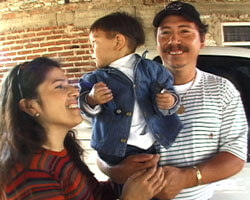 |
| Photograph of Rosa, Miguel and their son. |
Global Lives, Local Struggles
(Documentary footage used in this essay was provided by William Brown, Director, Living Across Borders.)
Part 2: Dr. Odem describes increasing rates of Latin American immigration to the Atlanta metropolitan area
Part 3: Transnational migrant circuits between Atlanta and localities in Mexico and Central America
Part 4: Situating Chamblee and Doraville as sites of immigrant settlement in suburban Atlanta
Part 5: Increased surveillance andcontrol of immigrant workers in Georgia
Part 6: The construction of Latino spaces and communities, specifically Latin American Catholicism in the South
Part 7: Fostering integration and homeland ties within Latino Catholic spaces
Part 8: The transformation of the religious landscape.
*Global Lives, Local Struggles: Latin American Immigrants in Atlanta was sponsored by a grant from The Pew Charitable Trusts and the Center for the Interdisciplinary Study of Religion at Emory University.
About Mary Odem
Mary Odem received her PhD in History from the University of California, Berkeley in 1989. Her areas of specialization within the field of US history include women and gender, family, migration, and ethnicity. Her research has focused on the ways in which capitalist development, urbanization, migration, and the expansion of state power have shaped and transformed gender, family, and race/ethnic relations. Odem's first book, Delinquent Daughters: Protecting and Policing Adolescent Female Sexuality in the United States (1995), examines the gender, class, and racial tensions that fueled campaigns to control female sexuality in the late nineteenth and early twentieth centuries. This book won the President's Book Award for the best new book manuscript from the Social Science History Association and was named a Choice Outstanding Academic Book of 1996. She has also co-edited a collection of essays, Confronting Rape and Sexual Assault (1998), which brings together leading scholarship in the social sciences on the subject of sexual violence.
Her current research project, Latino Immigrants and the Transformation of the U.S. South (2009), addresses the socio-cultural contexts, processes, and transformations of Latin American migration to the US South since 1965. The project examines how diverse groups of migrants from Mexico and Central America have reconstructed community life and collective identity in urban and suburban South, focusing on the gender and family dimensions of this process.
Video of Prof. Odem was taken at "The End of Southern Exceptionalism" conference held at Emory University in March of 2006, an event organized by Prof. Joseph Crespino of the Emory University History Department and Prof. Matt Lassiter of the Department of History at the University of Michigan at Ann Arbor.
Images
| Adame Bus Station in Chamblee with routes from Atlanta to cities and towns in Mexico. Chamblee, Georgia. Photo by Mary Odem, 2001 | Signs outside of the Buford Highway Flea Market. Chamblee, Georgia. Photo by Mary Odem, 2001 | |
| Blessed Sacrament Chapel in the Misión Católica de Nuestra Señora de las Américas. Doraville, Georgia. Photo by Mary Odem, 2000 | Offerings in the Blessed Sacrament Chapel in the Misión Católica. Doraville, Georgia. Photo by Mary Odem, 2000 | |
| Statue of Our Lady of Guadalupe outside of the Misión Católica. Doraville, Georgia. Photo by Mary Odem, 2001 | ||
| Statues of Our Lady of Guadalupe in the Misión Católica. Doraville, Georgia. Photo by Mary Odem, 2001 | ||
| Two men at the Feast Day celebration in honor of Our Lady of Guadalupe, Misión Católica. Doraville, Georgia. Photo by Mary Odem, 2000 | ||
| The Misión Católica with Doraville MARTA station in the background. Doraville, Georgia. Photo by Mary Odem, 2000 | ||
| Image of Our Lady of Suyapa, the patron saint of Honduras, in the Misión Católica. Doraville, Georgia. Photo by Mary Odem, 2001 | Procession for the Peruvian celebration of the feast day of El Señor de los Milagros. Doraville, Georgia. Photo by Mary Odem, 2000 | |
Recommended Resources
Arthur D. Murphy, et al., Latino Workers in the Contemporary South (Athens: University of Georgia Press, 2001)
Mary E. Odem and Elaine Lacy (eds.) Latino Immigrants and the Transformation of the U.S. South. Athens: University of Georgia Press, 2009.
Roger Rouse, "Mexican Migration and the Social Space of Post-Modernism” Diaspora 1(1991): 8-23.
Smith, Heather A. and Owen J. Furuseth, eds. Latinos in the New South: Transformations of a Place. Aldershot, England: Ashgate Publishing, 2006.
Maps and Tables
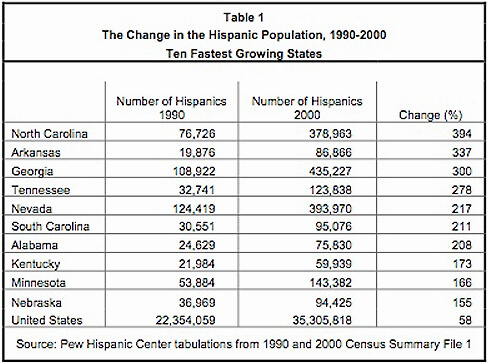
From: Rakesh Kochhar, Roberto Suro and Sonya Tafoya. "The New Latino South: The Context and Consequences of Rapid Population Growth," (Washington, DC: Pew Hispanic Center, 26 July 2005)
http://www.pewtrusts.org/our_work_report_detail.aspx?id=23322
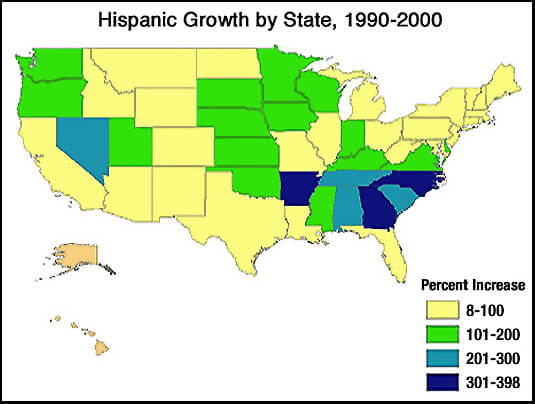
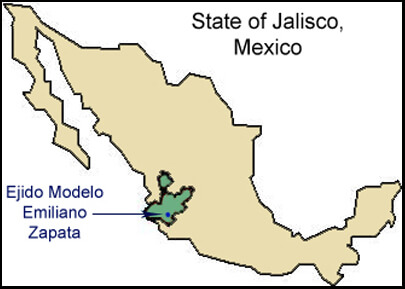
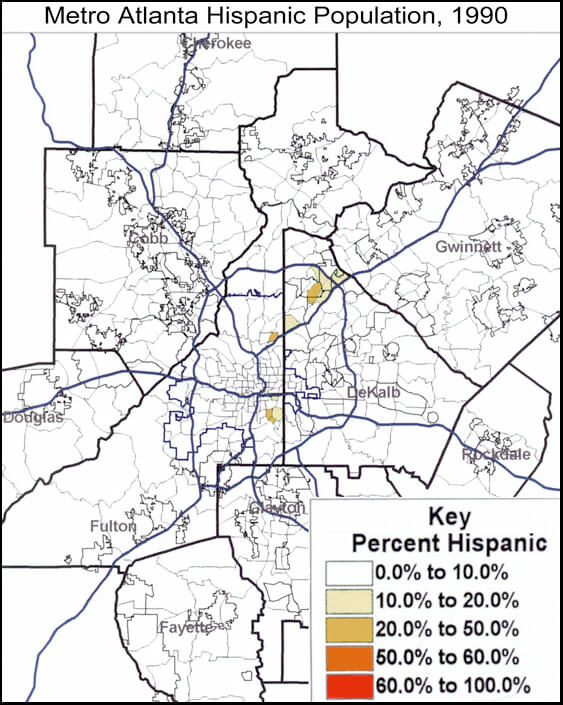
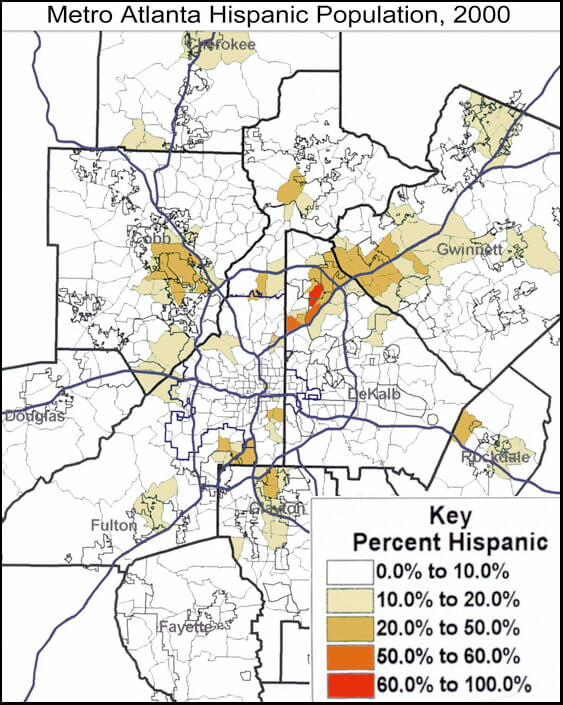
Links
Rakesh Kochhar, Roberto Suro and Sonya Tafoya. "The New Latino South: The Context and Consequences of Rapid Population Growth," (Washington, DC: Pew Hispanic Center, 26 July 2005) http://www.pewhispanic.org/2005/07/26/the-new-latino-south/.
Lewis Mumford Center, "Hispanic Population Data for the Metropolitan Statistical Areas: Atlanta, GA,"
http://mumford.albany.edu/census/HispanicPop/HspPopData/520msa.htm.
Metro Atlanta Rapid Transit Authority (MARTA) Bus and Rail Map
http://www.itsmarta.com/schedules-maps.aspx.
Audrey Singer, “The Rise of New Immigrant Gateways,” (Washington DC: The Brookings Institution, February 2004).
http://www.brookings.edu/research/reports/2004/02/demographics-singer.
Roberto Suro, “Remittance Senders and Receivers: Tracking the Transnational Channels,” (Washington, DC: Pew Hispanic Center, 2003).
http://pewhispanic.org/files/reports/23.pdf.

